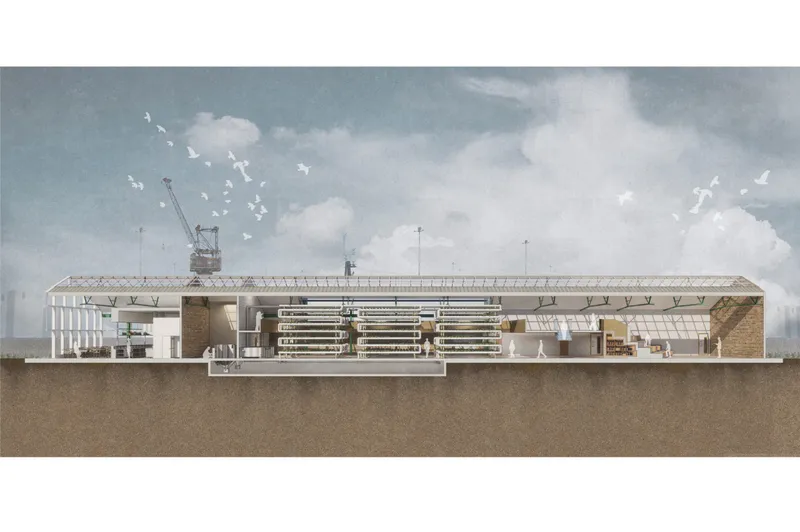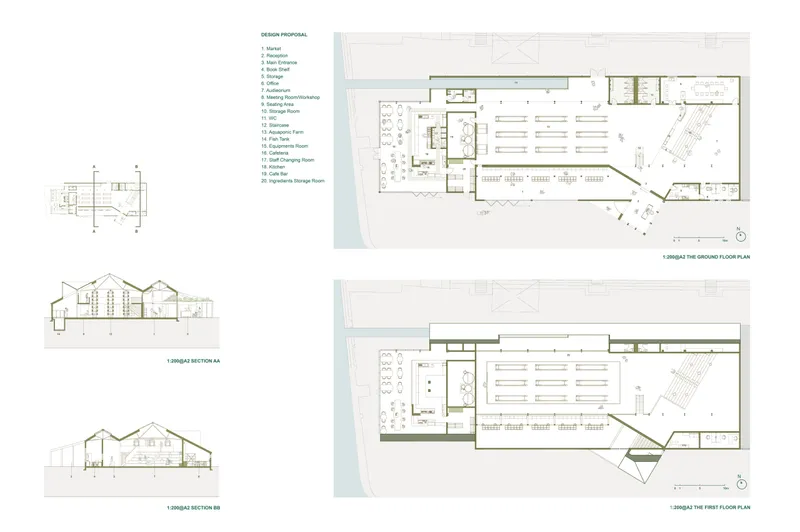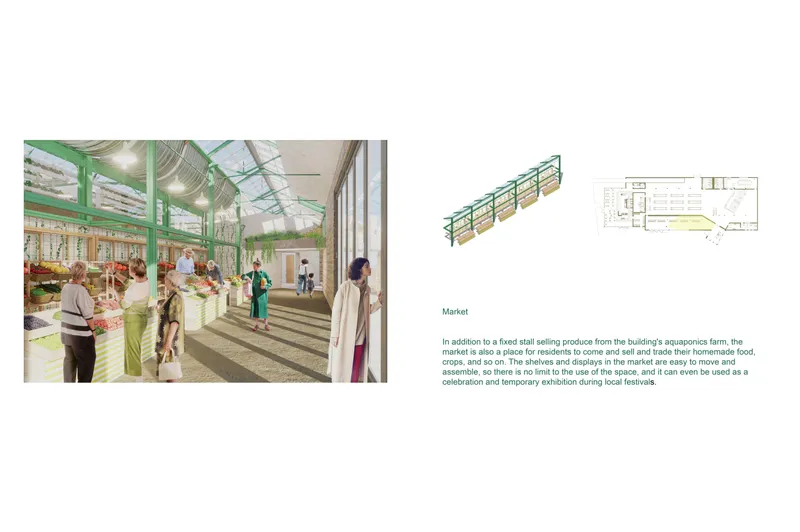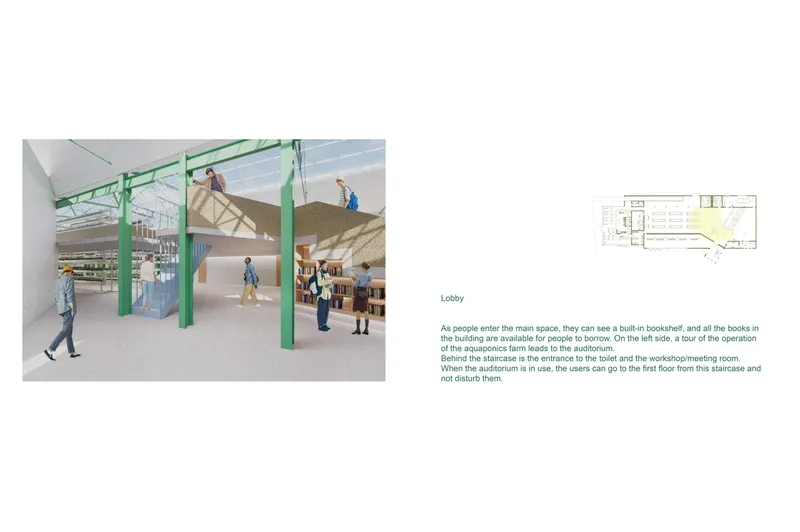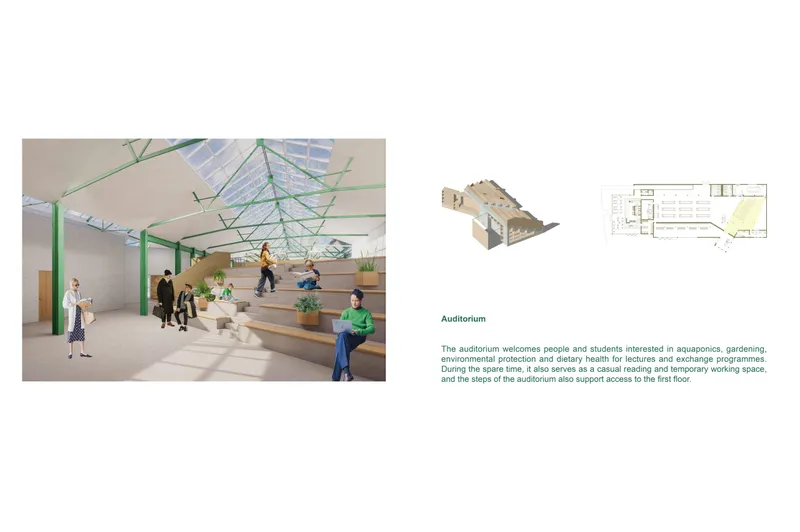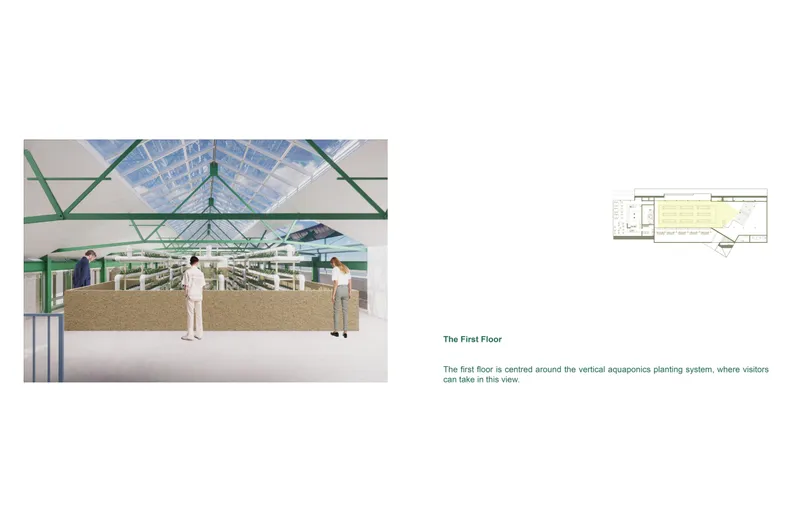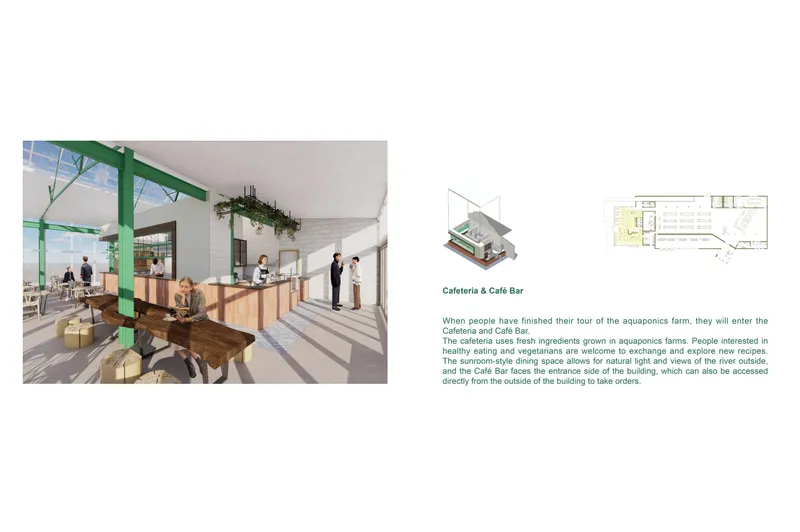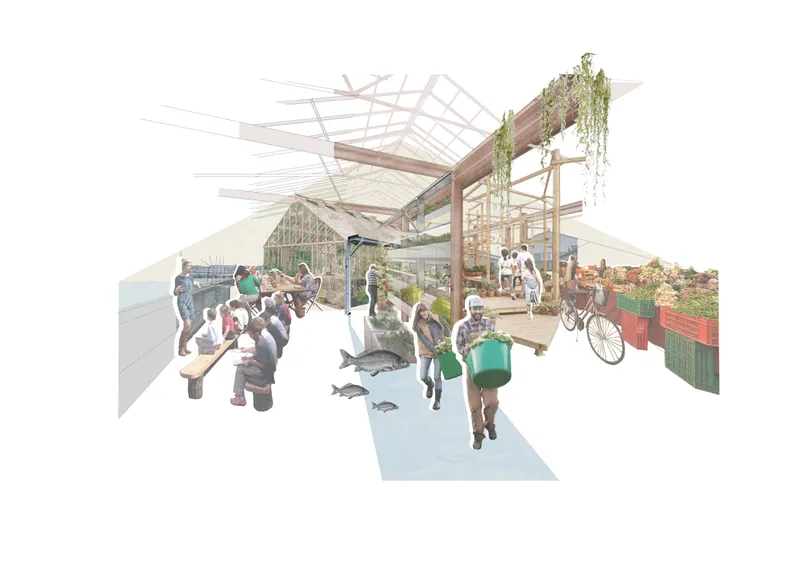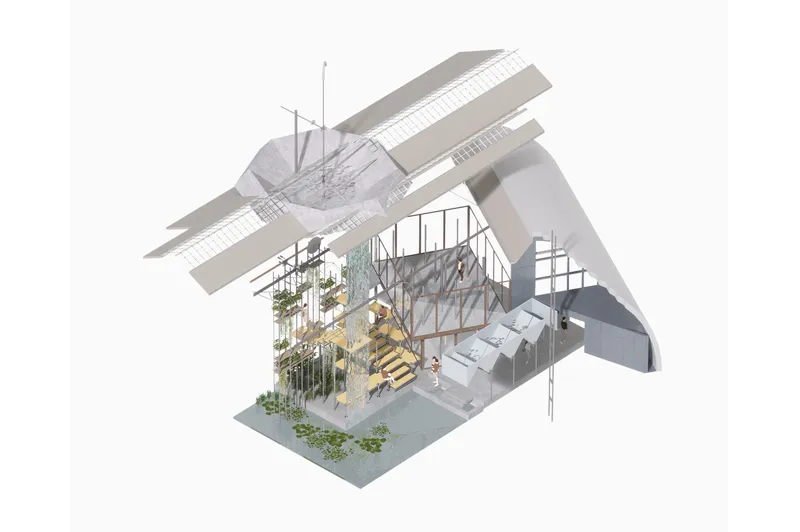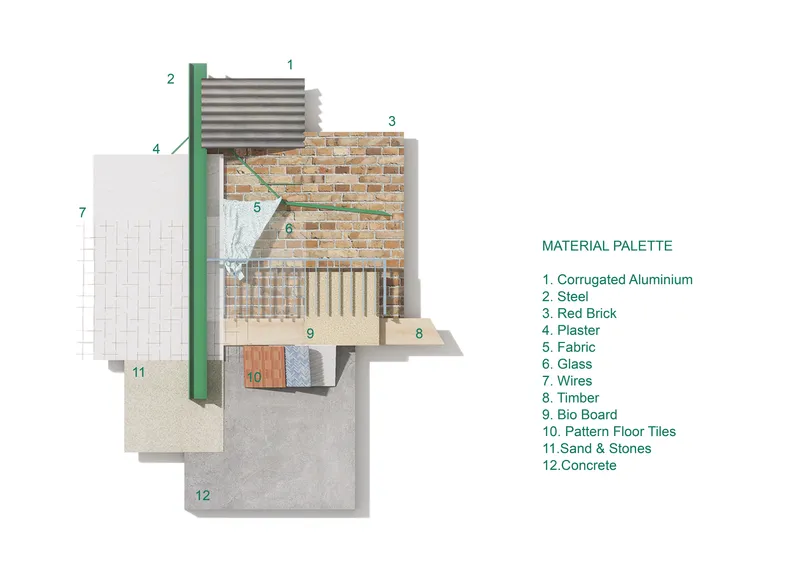The Historical Dockyard has brought a significant economic benefit and reputation to the local area, attracting people to live and work here and creating a deep collective memory for countless locals and their generations. Since closure, the dockyard’s chain of industries has been disrupted, its population has declined, its community values have faded, and a sense of alienation has developed between the Historical Dockyard and Chatham. Many factory-scale and construction buildings remain in the Historical Dockyard since it is a bustling manufacturing location. Despite transforming into a tourist attraction, it still lacks appeal to locals. Based on surveys, the dockyard is frequented by tourists, dockyard enthusiasts, and students on school trips, but not by those who live nearby. Meanwhile, people feel that community life in Chatham is dull and homogenous and needs an extra open space.
The building is designed as a multi-purpose space that integrates recreation, entertainment, education, and production. The water source near the Medway River and the equipped rainwater harvesting system are utilised to satisfy the water needs inside and out of the building. An aquaponics growing system is set up in the building, which is grown sustainably and recycled, supplying fresh produce to nearby restaurants and schools, with a portion of the proceeds going to charity. There is also a farmer’s market on the exterior of the building, which community residents are invited to run, creating a platform for socialising and fostering the hobby of growing.
As an integrated community centre, the building also serves an educational function, providing opportunities for the public to practice and increase environmental awareness.
People of all ages are encouraged to visit and participate in activities in this public space, combining green space with nature to create a sustainable ecosystem. This project aims to contribute to Chatham’s future by fostering innovation and community development.
